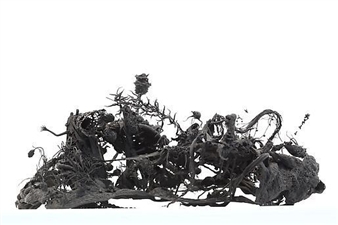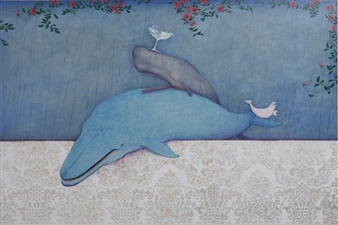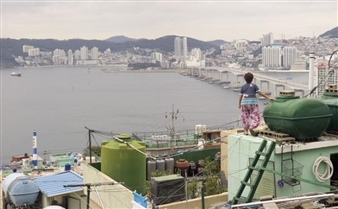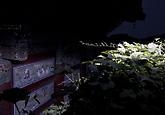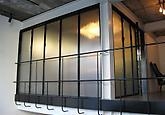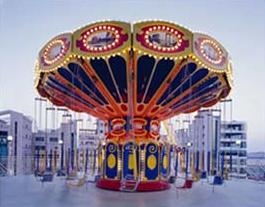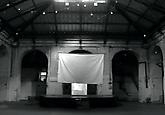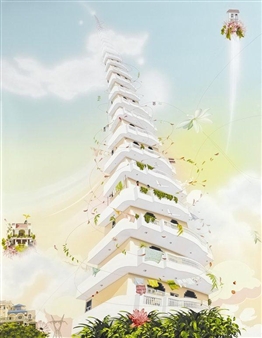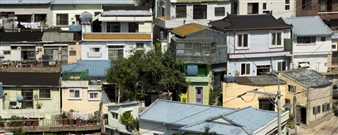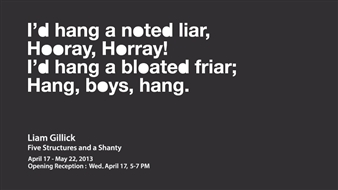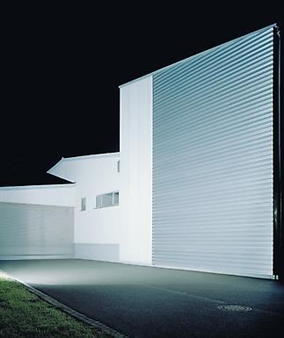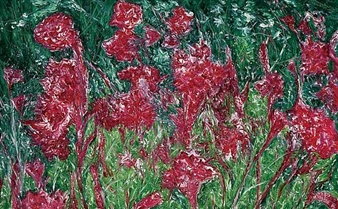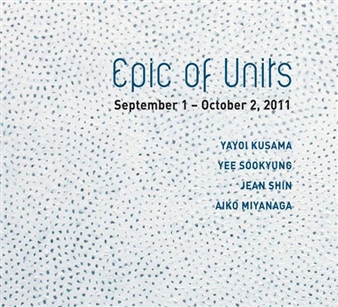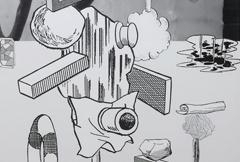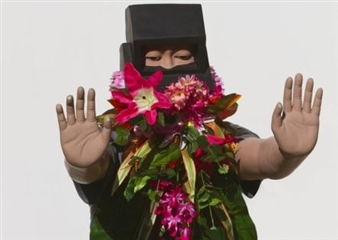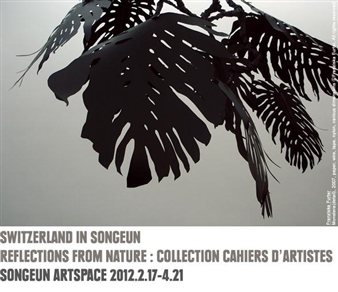All in the Game: The Art of Jaye Moon

BRICK LANE, Seoul-t'ukpyolsi, Mapo, 12/17/2015 - 01/16/2016
Mapo-gu, Seoul Zandari a three way 10
APT artist Jaye MOON is presenting a new Exihibition in Seoul.
During the past forty years, some three hundred million children have played with Lego, and it is estimated that in the course of a single year these children spend five billion hours amid the bricks. At last count, Lego had filled the world with a hundred and eighty-nine billion molded elements. Most of them, given the unbreakable longevity of the product, must still be in circulation. Half, as far as I can make out, are in my attic.i Anthony Lane’s rundown of some of the remarkable facts associated with Lego in his 1998 New Yorker essay “The Joy of Bricks” is an entertaining reminder of the toy’s ubiquity, a quality that Jaye Moon picked up on when she began using the toy as a medium around the same time. Starting out by assembling “Lego soups, cakes, abacuses, and other things,” the Brooklyn-based artist moved on to the production of sculptures with a sharp political edge. This group includes Target I (1997), in which the figure of a Native American is pinned against a target formed from Lego roadway components, and America (2000), in which a row of tiny guns, swords, and daggers conjures a similar blend of playfulness and violence. Eventually, Moon rejected this striking but arguably restrictive thematic focus in favor of a greater concentration on Lego’s formal qualities, settling too on using architectural components such as doors and windows, and later combining these with various non-Lego ingredients. In 2002, she started a series of Lego suitcases, sometimes using semi-translucent white Plexiglas, which she continues to employ for the radiant, almost ethereal effects that become possible when it is used to veil fluorescent-colored interior structures. Suite 503 (2002) is the earliest such work; other entries in the series are more intensely hued, and a few, such as Guinea’s Window (2002), allude to the designs of national flags. In 2004, Moon began a series of lunchbox sculptures, the scale and proportions of which echo the classic metal American version. Next came a run of “drawer” and “corner” works, which in turn led to a sequence of “container houses” that again fuses architectural design with more intimate kinds of space. In Orange Trailer (2005), for example, she adds a metal handle and feet to a shoe-box-like Plexiglas case, transforming it into a miniature mobile home by the simple device of punctuating one wall with Lego windows and a door. In all of these series, Moon wields Lego’s allusion to industrial manufacturing and standardization to probe our collective
Cultural fetish for the portable and the instantaneous, while also playing on the toy’s inescapable aura of nostalgia. Further, there are echoes in many of the artist’s new works of the closed circuits and barred windows—as well as the artificially heightened tints—that characterize Peter Halley’s paintings from the 1980s to now. While Halley uses a consciously restricted vocabulary of “industrially” painted icons to deconstruct the controlling systems of postmodern society, Moon wields the Lego brick as a modernist structural base unit that, while outwardly adaptable to a diversity of functions and contexts, remains at heart a pre-shaped instrument of the powers that be. Her work also has strong echoes of such post-Pop masters as Haim Steinbach and Jeff Koons, who appropriate the forms of mass-produced toys with an eye to cultural critique. More recently, as evinced by the work in the present exhibition, Moon has been focusing more on ideas around fashion: “Art and fashion have become very close to each other,” she observes. “They form a synergy.” Moon’s newest suitcase works are still made using Lego components, Plexiglas, and home-interior detail items such as doorknobs and hinges, but recombine these components into minimalistic haute-couture handbags, the very epitome of impractical trendiness. Such bags are vehicles for the projection of personal identity as mediated by commerce, also functioning as reminders of art’s own financial value. “The more art resembles fashion,” Moon observes, “the more art consumption resembles more popular or practical forms of consumerism.” In an era when collecting has developed into a kind of high-end retail therapy, this conclusion is practically a truism. This allusion to the changing status of art and artists in a market that values the visibility of commerce above all else begins to emphasize a different species of interactivity: “Now we want to communicate with art rather than just look at it, to participate in the action and become a part of it. Thinking about the relationship between collecting and shopping, I wondered, where the line between art and fashion should be drawn.” By focusing on the handbag—along with high- heeled shoes, perhaps the ultimate fashion item in its manifestation of endless decorative variation—Moon identifies one of those places in which art and fashion appear to converge insofar as both can feel at once magnetically desirable and utterly superfluous. We may “participate in the action” of fashion—and of art—but what does this activity really entail? Perhaps it’s all just a game. Many of Moon’s newest works, in their use of reflective surfaces, iridescent finishes, and asymmetrical cutouts, certainly have the feel of puzzles, or perhaps stage magician’s gear; others are reminiscent of the enduringly popular Rubik’s Cube. Moon herself generally avoids making such pop-cultural references explicit, preferring to cite her early and ongoing fascination with the precise structures and surfaces crafted by Donald Judd, and with the boxy forms of modernist architecture. In this context, her handbag works are closer to Duchamp’s micro-museum Box in a Valise (From or by Marcel Duchamp or Rrose Sélavy) of 1935–41 than to Takashi Murakami’s recent designs for Louis Vuitton. Art and fashion have been bedfellows since day one, but that relationship still demands redefinition whenever it is put on display. And while in Moon’s work the two appear intimate, more than a trace of their
old tension—no longer as clear as form versus function or high versus low, but now more akin to a difference in temperature or mood—remains in play. —Michael Wilson
i Anthony Lane, “The Joy of Bricks” in the New Yorker, April 27, 1998 Michael Wilson is a writer and editor. He is an author of “How to Read Contemporary Art: Experiencing the Art of the 21st Century”.
For More Information